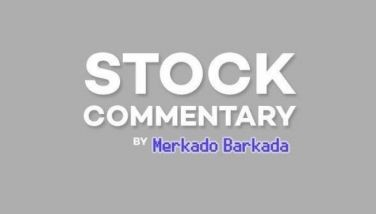Banks firm up defenses ahead of expected bad loan surge

MANILA, Philippines — Banks built up their defenses further ahead of an expectedly challenging year when a huge chunk of loans are bound to sour, potentially eating up on precious bank resources that could otherwise be lent out.
Coverage ratio for non-performing loans (NPL) hit a 9-month high of 94.61% of outstanding bad loans in January, according to latest central bank data on Friday.
NPL coverage measures banks’ provisioning to cover potential losses when a loan or credit ends up getting unpaid by borrower at least 30 days past due.
For most of last year, these defenses got eroded after lockdowns and the pandemic jolted bad loans upwards as jobless consumers and shuttered businesses defaulted on their obligations.
Yet after peaking in November, NPL had shown little signs of a massive uptick, at least for now. In January, NPLs accounted for 3.7% of entire loan books, up from 3.61% in December but still slightly below the record-high of 3.78% in November.
In fact, in absolute terms, the rise in NPL even slowed at 0.15% from 2.3% month-on-month. More specifically, gross bad loans amounted to P392.26 billion in January against a total loan portfolio of P10.61 trillion.
Yet the early reprieve seems to mark only a lull before the storm. In the past 2 weeks, two debt watchers, Fitch Ratings and S&P Global Ratings, have both forecast loans to sour and to swamp lenders’ balance sheets in 2021. Early on Friday, a Fitch report projected the NPL ratio to jump to as much 5% by yearend.
After lenders themselves projected a 4.6% bad loan ratio for 2020, where actual result fell lower, the central bank has not conducted a fresh survey of banks to determine whether they expect things to be better this year. That said, the Bangko Sentral ng Pilipinas itself see unpaid loans only peaking by June.
Indeed, the trend is upward but for now, things are unfolding slowly and the expected shock from the dismantling of payment moratoriums this year seemed to have not materialized just yet. BSP data showed banks’ distressed assets, which include foreclosed properties and restructured loans, even declined by roughly P10 billion to P670.39 billion month-on-month in January.
As a proportion of total loans however, distressed assets ratio hit a higher 6.24% from December’s 6.19%.
Out to get ahead of an NPL pick-up, the Duterte government enacted the Financial Institutions Strategic Transfer (FIST) law last month to allow banks to dump bad assets and remove them entirely from their balance sheets. In doing so, resources otherwise set aside to cover losses from these credits are freed up, with expectations they will be lent out to businesses and consumers and facilitate economic activity.
The central bank has been prodding lenders to extend credit to the economy by cutting policy rates by 200 basis points last year, but so far to no avail. As NPLs climbed, bank lending contracted for 2 months in a row ending January.
- Latest
- Trending






























